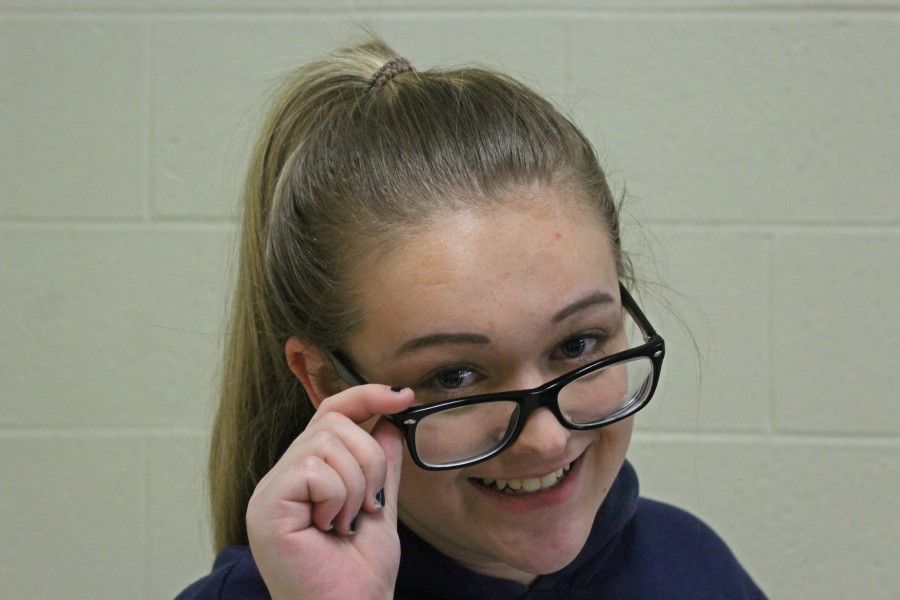You have to see it to believe it
Blurry vision is becoming the common denominator between all people
Phoebe Potter is among the millions of Americans who are nearsighted.
March 10, 2016
Nowadays, it’s very hard to find someone who has perfect vision. In fact, approximately one in four Americans are nearsighted.
With this condition, objects close to you are clear, but objects in the distance become blurry. A person that has perfect vision has the typical spherical eyeball shape. When you have myopia (nearsightedness), your eyeball stretches to become the shape of an oval.
Senior Nathan Davis does not feel special when it comes to his blurry vision.
“When I take my contacts out, I have to put my glasses on immediately or else I am a danger to myself and everyone in my house,” says Davis.
In the journal Ophthalmology, 145 studies involving 2.1 million people were conducted to view trends in nearsightedness.
It is predicted that by the year 2050, an astounding 4.8 billion people will be nearsighted.
“Being nearsighted was terrible. It made playing sports really hard, and I would always break my glasses during games until I got contacts,” says B-A student teacher Miss Pecile. “I decided to get LASIK eye surgery because the contacts I wore weren’t strong enough to correct my almost-blind vision.”
With 49.8% of the world’s population being nearsighted in thirty-four years, 9.8% will have high myopia. This means that their condition will put them at high risk for more serious eye problems.
In 2010, it is recorded that only 4% of the population had high myopia, compared to the predicted 9.8%.
So why are these facts the way they are?
Although the exact causes are unknown for this condition, heredity seems to be a major contributor. If both of your parents have high myopia, you are at a greater risk.
Many eye-opening studies have been conducted to attempt to find a “cure” for nearsightedness. The time a child spends outdoors was analyzed the most.
In 2013, a study was conducted to view the effect that outdoor activity has on children ages 7-11. Three hundred and thirty-three students went outside during recess, and 238 stayed indoors for one year.
Showing no significant differences in the beginning, the study proved to be effective. After one year, 8.4% of the children that went outside had a new onset of myopia, and a whopping 17.6% of the students that stayed indoors did as well.
Concluding the study, the researchers believe that outdoor activity seems to protect children that have not yet been deemed nearsighted.
“I spend a lot of time outside, so I don’t think studies like these are true for all places in the world,” says Noah D’Angelo, who is almost legally blind.
Another study that was conducted analyzes the amount of daylight a child sees per day, and it seemed to have the same results.
In the future, more research will be needed to see exactly which environmental factors cause myopia.
There is also controversy involving burying your face in a screen for long periods of time.
Nothing has been proven to show that phones, TVs, and computers could be the cause of myopia, but it seems to be a common trend among parents when they yell at you for “sitting too close to the TV.”
By the year 2050, you’ll be better off getting struck by lightning then finding someone with perfect vision.
The phrase “I’ll see you later” might become politically incorrect.






